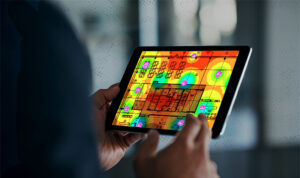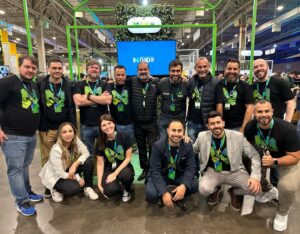Remote access to information has grown as the number of machines, people, and connected things increases.
Has remote access to information been growing? as it increases the number of machines, people and things connected. This process created the “Internet of Things” (IoT) as a trend that, despite being experienced, needs to be demystified. Reaching a more affordable level, IoT will depend on investments aimed at reducing costs of technology that captures, manages, protects and stores information collected by machines or people, as well as investments in software that can support transactions between things.
Faced with this complexity, we recently discussed the pattern that will allow new business models around IoT. Even with all the technological advances and the internet boom in the last 20 years, even today only 1% of all things in the world are connected. It shows that infinite possibilities will arise. However, many of these businesses can only take revenge if companies offer open standards in order to facilitate the development of products and services to be made available to users.
Open standards will allow scalability to manufacturers, and companies from multiple segments, or even startups, are able to put ideas into niches from previously unexplored markets. Closed patterns would require users to have dozens of mobile devices, such as smartphones and other readers, to access information from things.
An example is the wristband that transmits user information. Let’s assume you use the bracelet to access the university and other establishments you attend, but the manufacturer of the person-recognition solution that integrated the system at the university is not the same one used to access the English language school, so you will need another one bracelet. The fitness facility also implemented recognition for the bracelet. And guess what: they opted for another manufacturer; it, the fitness line exclusive. The total is three bracelets from manufacturers that implemented their standards and did not open the solution to be integrated.
The open standard model can expand the businesses number, as we know the importance of keeping the supply chain connected, from factories, warehouses and buildings. We, this scenario clients, until then desktops and notebooks users, we started to use smartphones and today we even make payments for these mobile devices. In the not-too-distant future, within our residences, we will have the next consumer electronics generation that will bring real-time information on consumption, presence, expiration, among other things.
For everything to connect, we need a more collaborative market that breaks down the barriers imposed by proprietary protocols, so that there is the technologies supply that make Internet of Things ever more viable.
However, open standards will also bring some challenges, such as the security fragility. It is because, the greater the number of things connected, the greater the exposure and the risk with information stored or transmitted. According to the British Computing Society (BCS) study? Chartered Institute for IT, security is a top priority for 54% of IT executives. Thus, security will not be left without the manufacturers priority, who will certainly develop rules and restrictions to avoid vulnerabilities. As for users, expect mature solutions and market references.
In short, IoT will bring innovative alternatives and transform our lives at all levels. We will have a chance to enter a new market, where things will start talking to people through protocols and intelligent systems. There are countless possibilities! The year 2015 began with the certainty that soon much will appear. Who knows among them is the open IoT standard.
* Éderson Frozi is technology director for Codi.mobi, a company that recently merged with Nap IT.







